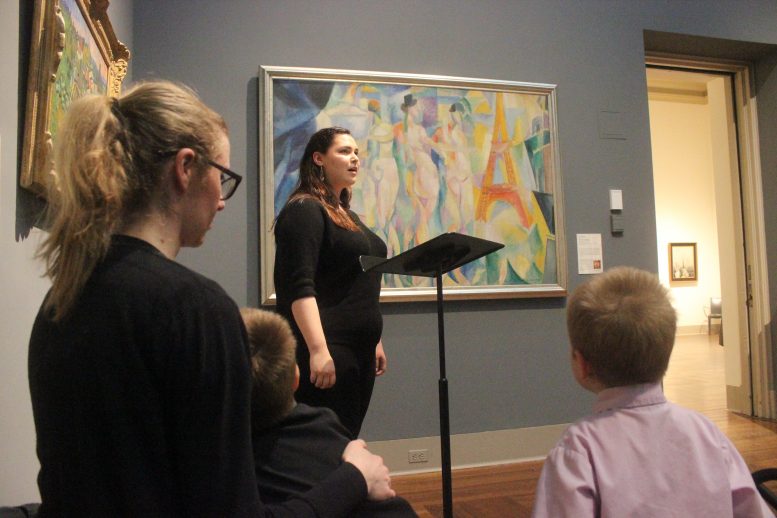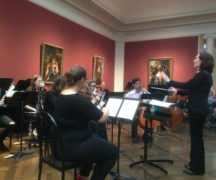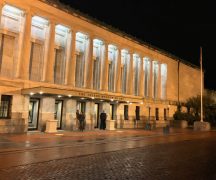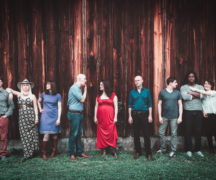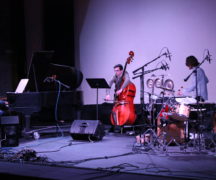By DAVID DUPONT
BG Independent News
Exhibits now at the Toledo Museum of Art, pose the questions: What does art sound like? Or what does music look like?
Earlier this month the museum opened “Everything Is Rhythm” in the New Media Gallery. The exhibit pairs contemporary paintings with musical selections.
The exhibit was inspired EAR/EYE, a collaboration between the museum and the Bowling Green State University College of Music Arts. Those concerts feature students in the doctorate in contemporary music program performing live in the museum’s galleries. The concept is the same — music is selected to reflect a specific work of art.
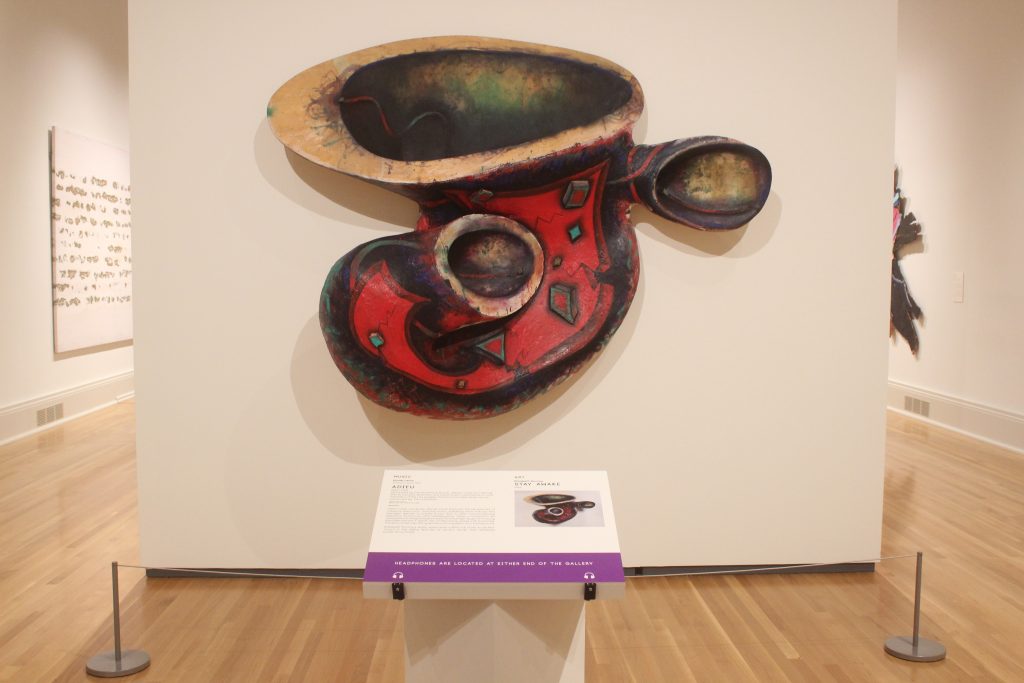
For “Everything Is Rhythm,” the music is recorded. Hans Hofman’s evocative “Night Spell” from 1965 is complemented by a segment from Miles Davis’ improvised score for the Louis Malle film “Elevator to the Gallows.”
Scott Boberg, manager of programs and audience engagement, said the juxtaposition of the jazz wail of Davis’ trumpet with the vibrant darkness of the painting drew a “wow,” from the museum’s director, Brian Kennedy.
The exhibit, curated by Boberg and Halona Norton-Westbrook, director of curatorial affairs, features 14 paintings. In front of each is a station in which the visitor can plug headphones and listen to a selection of music.
“In some instances, the composer and artist were known to one another and shared a direct connection, while in other instances, the selected musical composition and art work share ideas, approaches or aspects such as rhythm, texture or basic structure. In some instances, the art work and music paired with it are separated by decades,” Boberg said.
This is intended to engage the viewer in contemplating the connection, Norton-Westbrook said.
That linkage doesn’t get any tighter than the pairing of Agnes Martin’s meditation on shades of white, “#18,” painted in 1995 with Harold Budd’s 1996 piece dedicated to the painter.
Last fall Budd visited the museum and BGSU to perform and discuss his work.
Judit Reigl’s tribute to Bach’s Art of the Fugue is paired with a selection from that music that was performed by a string quartet from the Toledo Symphony in the museum earlier this year.
The op art of Victor Vasarely is set to music by composer, performer, and producer Tim Story, of Maumee.
The playlist is full of musical memories of composers, performers, and pieces that have been performed at BGSU and the museum.
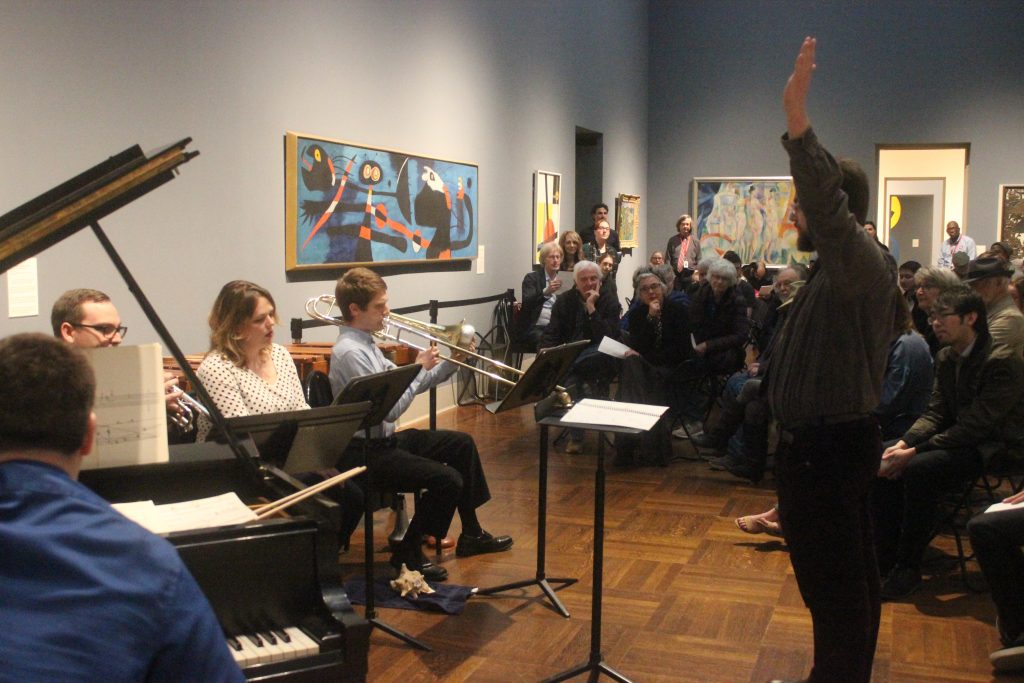
The EAR/EYE series is in its fourth year. At the most recent concert, Boberg recalled meeting with Marilyn Shrude, of the BGSU composition faculty, in a cafe and cooking up the idea for EAR/EYE.
The April EAR/EYE performance took place in Gallery 3 of the Toledo Museum of Art. Listeners, seated on folding stools, clustered around the performers. Boberg served as ring master directing listeners on how to position themselves as performers took up their stations near the selected works of art.
Before each piece Norton-Westbrook spoke about the art, explaining, for instance, how Joan Miro’s painting was originally created for the bedroom of the children of a patron. But the work — “Woman Haunted by the Passage of the Bird” — proved too true to its title and frightened the children.
Shrude explained that the John Cage piece performed with it gives the performers a variety of options. They have numerous pages of music that they can play in any order, or not at all. The quartet of musicians with conductor Alex Popovici took full advantage of the freedom.
When soprano Hillary LaBonte sang her face was framed by the Eiffel Tower as painted by Robert Delauney. Her wordless vocalizing sounded like the folk music of an ancient people lost in time. LaBonte beat her chest, her voice warbled. The piece, though, was contemporary, Gilda Lyons’ “A Manual for the Use of Wings.”
The concert began with pianist Humay Gasimzade performing the knotty solo piece “Catenaires” by Elliott Carter. The long chains of notes seemed to have several scales playing simultaneously.
The performance ended fittingly with Luciano Berio’s “Good Night.” The composition is a series of haunting variations on “Taps.” Trumpeter Jonathan Britt played it from the neighboring antiquities gallery. That only added to the sense of the music floating in from another time.
The final EAR/EYE performance will be May 10 at 7 p.m.
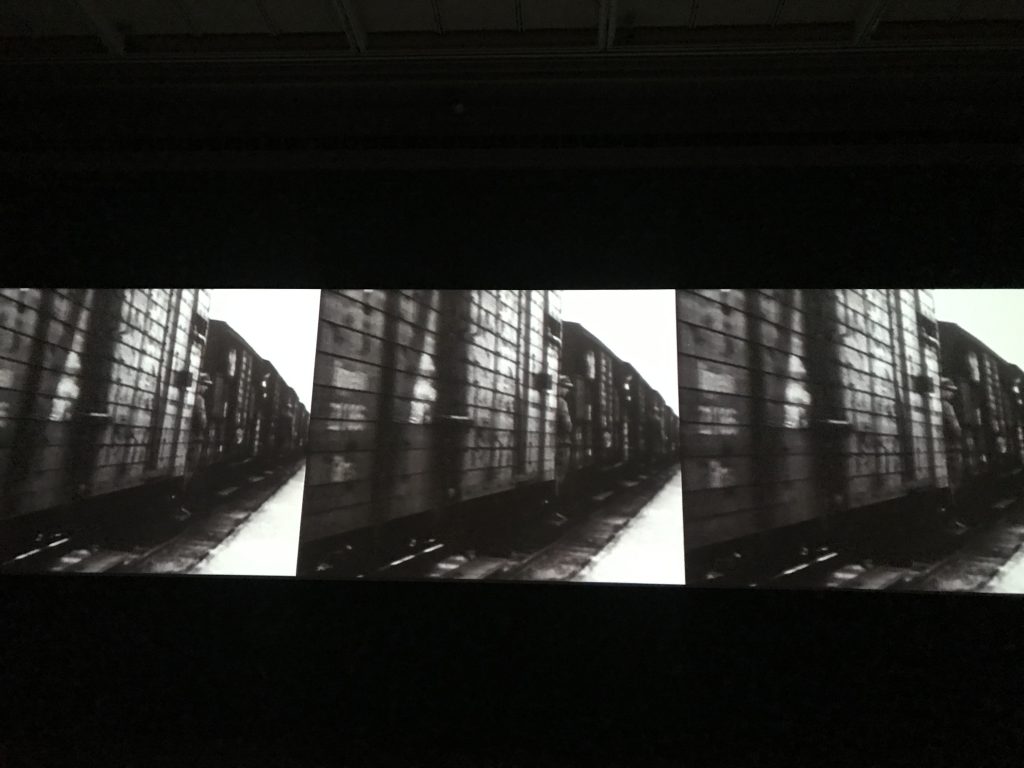
The museum is also exhibiting another blending of the aural with the visual. In the 29-minute video “Different Trains,” Spanish filmmaker Beatriz Caravaggio uses archival footage of trains to create a visual realization of Steve Reich’s string quartet “Different Trains.”
In the piece, Reich reflects on how as a child he traveled across the country by train for visits to his divorced parents. These trips were filled with a sense of excitement and adventure.
At the same time, across the ocean in Europe, other people, Jews like himself, were being transported to concentration camps by trains. The film reflects that dichotomy with images of trains traveling the U.S. giving way in the middle to Jews being herded into cattle cars, ending with post-war images of American trains.
On Thursday, April 25, at 7 p.m. in the Toledo Museum of Arts’ Little Theater, Stephen L. Esquith, from Michigan State University, responds to artist to the film. “Different Trains” is running in the Canaday Gallery through May 5.

